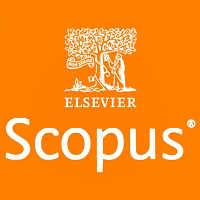
This article is an open access article distributed under the terms and conditions of the Creative Commons Attribution license (CC BY).
ORIGINAL RESEARCH
Relationship of stable combinations of salivary catecholamines with cerebral function organization in patients with chronic cerebral ischemia
Research Center of Neurology, Moscow, Russia
Correspondence should be addressed: Vitaly F. Fokin
Volokolamskoye shosse 80, Moscow, 125367, Russia; ur.liam@fvf
Author contribution: Fokin VF — manuscript writing; Abaimov DA — biochemistry testing; Ponomareva NV — physiological and neuropsychological testing design, general study design; Medvedev RB — Doppler tests and clinical assessment; Konovalov RN — brain imaging testing design; Lagoda OV — clinical assessment; Krotenkova MV — brain imaging testing management; Shabalina AA — biochemistry testing design; Tanashyan MM — clinical assessment management, general study design.
Compliance with ethical standards: the study was approved by the Ethics Committee of the Research Center of Neurology (protocol No. 5-6/22 dated 1 June 2022). The informed consent was submitted by all study participants.
- Eisenhofer G, Kopin IJ, Goldstein DS. Catecholamine metabolism: a contemporary view with implications for physiology and medicine. Pharmacol Rev. 2004; 56 (3): 331–49. DOI: 10.1124/pr.56.3.1. PMID: 15317907.
- Goldstein DS, Eisenhofer G, Kopin, IJ. Sources and Significance of Plasma Levels of Catechols and Their Metabolites in Humans. Journal of Pharmacology and Experimental Therapeutics. 2003; 305 (3), 800–811. Available from: https://doi.org/10.1124/JPET.103.049270.
- Schwab KO, Heubel G, Bartels H. Free epinephrine, norepinephrine and dopamine in saliva and plasma of healthy adults. Eur J Clin Chem Clin Biochem. 1992; 30 (9): 541–44. PMID: 1457617.
- Okumura T, Nakajima Y, Matsuoka M, Takamatsu T. J Chromatogr B Biomed Sci Appl. 1997; 694 (2): 305–16. DOI: 10.1016/s0378-4347(97)00106-0. PMID: 9252044.
- Kennedy B, Dillon E, Mills PJ, Ziegler MG. Catecholamines in human saliva. Life Sci. 2001; 69 (1): 87–99. DOI: 10.1016/s0024-3205(01)01111-0. PMID: 11411808.
- Lei, S. (2014). Cross interaction of dopaminergic and adrenergic systems in neural modulation. International Journal of Physiology, Pathophysiology and Pharmacology. 2014; 6 (3): 137–42. Available from: https://pubmed.ncbi.nlm.nih.gov/25349636/.
- Parfenov VA. Sosudistye kognitivnye narusheniya i hronicheskaya ishemiya golovnogo mozga (discirkulyatornaya encefalopatiya). Nevrologiya, nejropsihiatriya, psihosomatika. 2019; 11 (Pril. 3): 61–67. Russian.
- Tanashyan MM, Antonova KV, Raskurazhev AA, Lagoda OV. Cerebrometabolicheskoe zdorov'e. M.: MediaSfera, 2025; 260 s.
- Graff-Radford J. Vascular Cognitive Impairment. Continuum (Minneap Minn). 2019; 25 (1): 147–64. DOI: 10.1212/CON.0000000000000684. PMID: 30707191; PMCID: PMC6548535.
- Wardlaw JM, Smith EE, Biessels GJ, Cordonnier C, Fazekas F, Frayne R, et al. Standards for ReportIng Vascular changes on nEuroimaging (STRIVE v1). Neuroimaging standards for research into small vessel disease and its contribution to ageing and neurodegeneration. Lancet Neurol. 2013; 12 (8): 822–38. DOI: 10.1016/S1474-4422(13)70124-8. PMID: 23867200; PMCID: PMC3714437.
- Morris JC. Clinical dementia rating: a reliable and valid diagnostic and staging measure for dementia of the Alzheimer type. Int Psychogeriatric. 1997; (9 Suppl 1): 173–76.
- Vining RF, McGinley RA, Maksvytis JJ, Ho KY. Salivary cortisol: a better measure of adrenal cortical function than serum cortisol. Ann Clin Biochem. 1983; 20 (Pt 6): 329–35. DOI: 10.1177/000456328302000601. PMID: 6316831.
- Kudielka BM, Kirschbaum C. Awakening cortisol responses are influenced by health status and awakening time but not by menstrual cycle phase. Psychoneuroendocrinology. 2003; 28 (1): 35–47. DOI: 10.1016/s0306-4530(02)00008-2. PMID: 12445835.
- Fokin VF, SHabalina AA, Ponomareva NV, Medvedev RB, Lagoda OV, Tanashyan MM. Kortizol, citokiny i vegetativnye izmeneniya pri kognitivnoj nagruzke u bol'nyh hronicheskoj ishemiej mozga. Patologicheskaya fiziologiya i eksperimental'naya terapiya. 2023; 67 (3): 51–57. DOI: 10.25557/0031-2991.2023.03.51-57. Russian.
- Kvetnansky R, Sabban EL, Palkovits M. Catecholaminergic systems in stress: structural and molecular genetic approaches. Physiol Rev. 2009; 89 (2): 535–606. DOI: 10.1152/physrev.00042.2006. PMID: 19342614.
- Goldstein DS. Catecholamines and stress. Endocrine Regulations. 2003; 37 (2): 69–80. Available from: https://pubmed.ncbi.nlm.nih. gov/12932192/.
- Rosenbaum R. Short Term Plasticity, Biophysical Models. Available from: https://dblp.uni-trier.de/db/reference/cn/cn2014.html.
- Fokin VF, Abaimov DA, Ponomareva NV, Medvedev RB, Konovalov RN, Lagoda OV, i dr. Nejroseti, chuvstvitel'nye k urovnyu noradrenalina u bol'nyh hronicheskoj ishemiej mozga. Asimmetriya. 2022; 16 (3): 23–31. Russian.
- Zucker RS, Regehr WG. Short-term synaptic plasticity. Annu Rev Physiol. 2002; 64: 355–405. DOI: 10.1146/annurev.physiol.64.092501.114547. PMID: 11826273.
- Thompson RF, Kim JJ. Memory systems in the brain and localization of a memory. Proc Natl Acad Sci USA. 1996; 93 (24): 13438–44. DOI: 10.1073/pnas.93.24.13438. PMID: 8942954; PMCID: PMC33628.
- Malenka RC, Bear MF. LTP and LTD: an embarrassment of riches. Neuron. 2004; 44 (1): 5–21. DOI: 10.1016/j.neuron.2004.09.012. PMID: 15450156.
- Tank AW, Lee Wong D. Peripheral and central effects of circulating catecholamines. Compr Physiol. 2015; 5 (1): 1–15. DOI: 10.1002/cphy.c140007.
